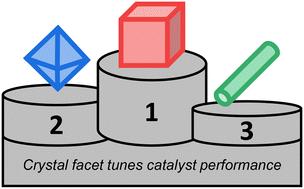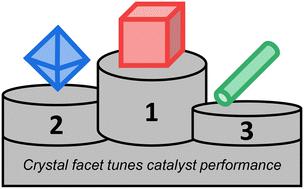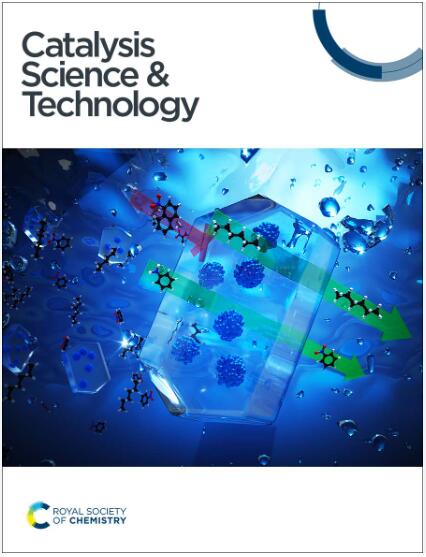Tuning catalytic performance of platinum single atoms by choosing the shape of cerium dioxide supports†
IF 4.4
3区 化学
Q2 CHEMISTRY, PHYSICAL
引用次数: 0
Abstract
The local coordination environment of single atom catalysts (SACs) often determines their catalytic performance. To understand these metal–support interactions, we prepared Pt SACs on cerium dioxide (CeO2) cubes, octahedra and rods, with well-structured exposed crystal facets. The CeO2 crystals were characterized by SEM, TEM, pXRD, and N2 sorption, confirming the shape-selective synthesis, identical bulk structure, and variations in specific surface area, respectively. EPR, XPS, TEM and XANES measurements showed differences in the oxygen vacancy density following the trend rods > octahedra > cubes. AC-HAADF-STEM, XPS and CO-DRIFTS measurements confirmed the presence of only single Pt2+ sites, with different surface platinum surface concentrations. We then compared the performance of the three catalysts in ammonia borane hydrolysis. Precise monitoring of reaction kinetics between 30–80 °C gave Arrhenius plots with hundreds of data points. All plots showed a clear inflection point, the temperature of which (rods > octahedra > cubes) correlates to the energy barrier of ammonia borane diffusion to the Pt sites. These activity differences reflect variations in the – facet dependent – degree of stabilization of intermediates by surface oxygen lone pairs and surface–metal binding strength. Our results show how choosing the right macroscopic support shape can give control over single atom catalysed reactions on the microscopic scale.


通过选择二氧化铈支架的形状来调节铂单原子的催化性能。
单原子催化剂(SAC)的局部配位环境往往决定了其催化性能。为了了解这些金属与支撑物之间的相互作用,我们在二氧化铈(CeO2)立方体、八面体和棒状体上制备了铂SAC,这些SAC具有结构良好的裸露晶面。通过 SEM、TEM、pXRD 和 N2 吸附对 CeO2 晶体进行表征,分别证实了其形状选择性合成、相同的块体结构和比表面积变化。EPR、XPS、TEM 和 XANES 测量结果表明,氧空位密度的变化趋势为棒状 > 八面体 > 立方体。AC-HAADF-STEM、XPS 和 CO-DRIFTS 测量证实,在不同的铂表面浓度下,只存在单个 Pt2+ 位点。然后,我们比较了三种催化剂在氨硼烷水解中的性能。通过对 30-80 °C 之间反应动力学的精确监测,我们得到了包含数百个数据点的阿伦尼乌斯图。所有曲线图都显示出一个明显的拐点,其温度(棒状 > 八面体 > 立方体)与氨硼烷扩散到铂位点的能量障碍相关。这些活性差异反映了表面氧孤对对中间产物的稳定程度和表面金属结合强度的变化--取决于面。我们的研究结果表明,选择正确的宏观支撑形状可以在微观尺度上控制单原子催化反应。
本文章由计算机程序翻译,如有差异,请以英文原文为准。
求助全文
约1分钟内获得全文
求助全文
来源期刊

Catalysis Science & Technology
CHEMISTRY, PHYSICAL-
CiteScore
8.70
自引率
6.00%
发文量
587
审稿时长
1.5 months
期刊介绍:
A multidisciplinary journal focusing on cutting edge research across all fundamental science and technological aspects of catalysis.
Editor-in-chief: Bert Weckhuysen
Impact factor: 5.0
Time to first decision (peer reviewed only): 31 days
 求助内容:
求助内容: 应助结果提醒方式:
应助结果提醒方式:


